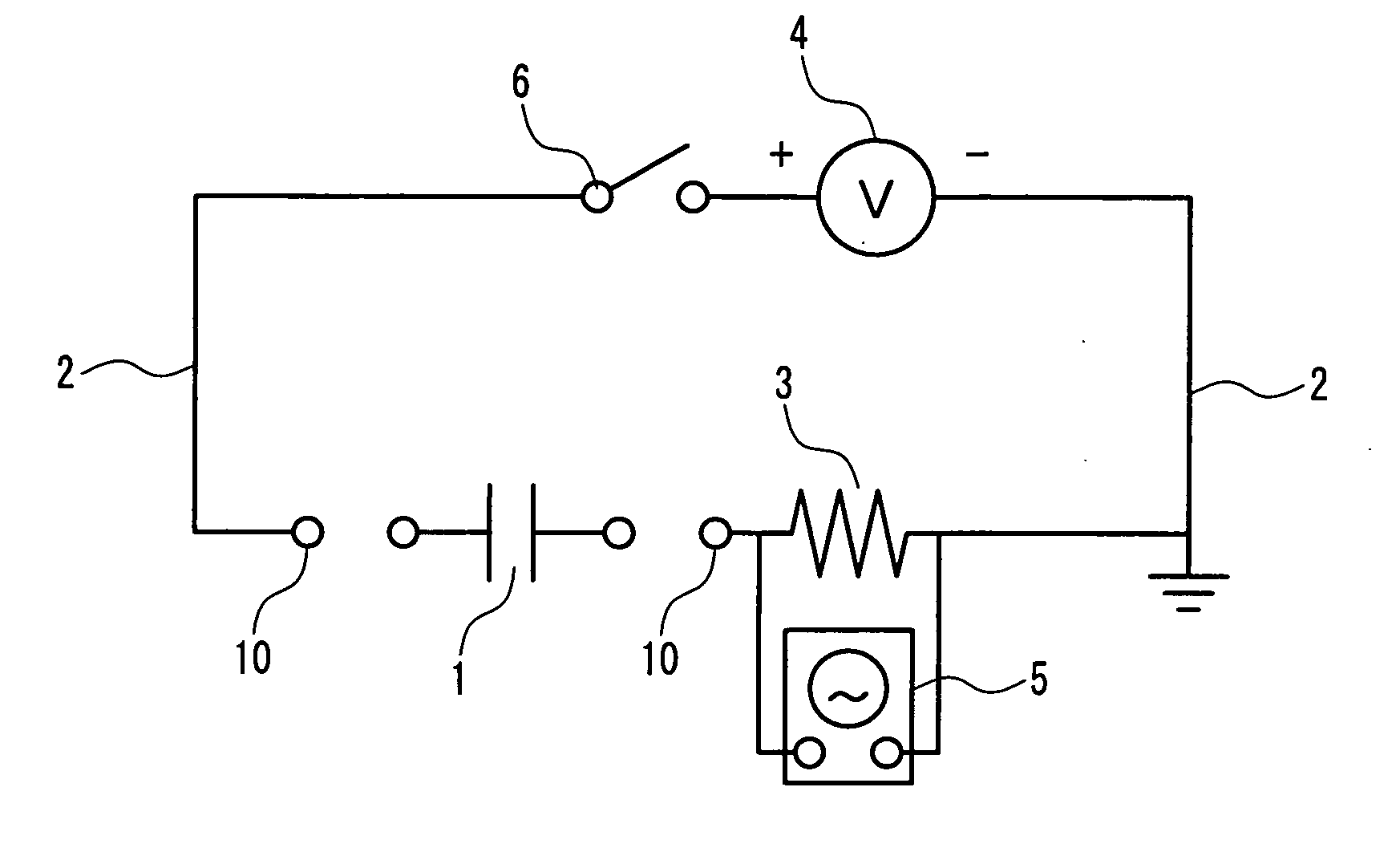Method for testing precursor of secondary cell, its testing instrument, and method for manufacturing secondary cell using the method
a secondary cell and precursor technology, applied in secondary cell servicing/maintenance, sustainable manufacturing/processing, instruments, etc., can solve the problems of difficult detection of potentially short-circuited products, application of the inspection method, and inability to detect an electrode body that may become short-circuited, etc., to achieve effective screening and short time
- Summary
- Abstract
- Description
- Claims
- Application Information
AI Technical Summary
Benefits of technology
Problems solved by technology
Method used
Image
Examples
embodiment 1
(Embodiment 1)
[0037] In Embodiment 1, an inspection method and an inspection device of the present invention will be described.
[0038] If a foreign object is present between electrodes, or a separator is defective, an insulation distance between the positive and negative electrodes is reduced substantially. In this case, when an electrode body is charged, a discharge phenomenon (surface discharge) is likely to occur parallel to a surface of the separator as a porous material. By using the inspection method of the present invention, a current due to such a surface discharge can be detected. The surface discharge can be detected even if the distance between the positive and negative electrodes is extremely short. The surface discharge phenomenon includes a partial discharge phenomenon caused locally in the separator, and an arc discharge phenomenon caused between the positive and negative electrodes.
[0039] Hereinafter, the inspection method of the present invention will be described....
embodiment 2
(Embodiment 2)
[0071] In Embodiment 2, a description will be given of an exemplary method for manufacturing a secondary battery of the present invention.
[0072] The secondary battery to be manufactured in the present invention is, for example, a nickel metal hydride battery, a lithium ion secondary battery, and the like. Among them, a lithium ion secondary battery with a thin separator (e.g., 25 μm or less) is particularly suitable.
[0073] The manufacturing method of the present invention is characterized in that a secondary battery precursor before being brought into contact with an electrolyte solution is inspected by the inspection method of the present invention. Other manufacturing processes may be realized by well-known manufacturing methods. Further, components of the battery may be formed with well-known components. Hereinafter, an exemplary manufacture of a lithium ion secondary battery will be described.
[0074] Initially, a secondary battery precursor including a pair of el...
example
[0081] Hereinafter, the present invention will be described in further detail by way of an example. However, the present invention is not limited to the example described below.
[0082] Initially, an electrode body of a secondary battery (secondary battery precursor) was produced. A positive plate 51 was produced by applying a paste containing lithium cobaltate (main component) and acetylene black to both surfaces of an aluminum foil. At this time, a collector lead was welded to a part of the aluminum foil instead of applying the paste thereto. A negative plate 52 was produced by applying a paste containing graphite as a main component to both surfaces of a copper foil. At this time, a collector lead was welded to a part of the copper foil instead of applying the paste thereto.
[0083] The positive plate 51 and the negative plate 52 were laminated and wound with a separator 53 sandwiched therebetween, whereby the electrode body was obtained. A porous film (thickness of 20 μm) made of ...
PUM
 Login to View More
Login to View More Abstract
Description
Claims
Application Information
 Login to View More
Login to View More - R&D
- Intellectual Property
- Life Sciences
- Materials
- Tech Scout
- Unparalleled Data Quality
- Higher Quality Content
- 60% Fewer Hallucinations
Browse by: Latest US Patents, China's latest patents, Technical Efficacy Thesaurus, Application Domain, Technology Topic, Popular Technical Reports.
© 2025 PatSnap. All rights reserved.Legal|Privacy policy|Modern Slavery Act Transparency Statement|Sitemap|About US| Contact US: help@patsnap.com



